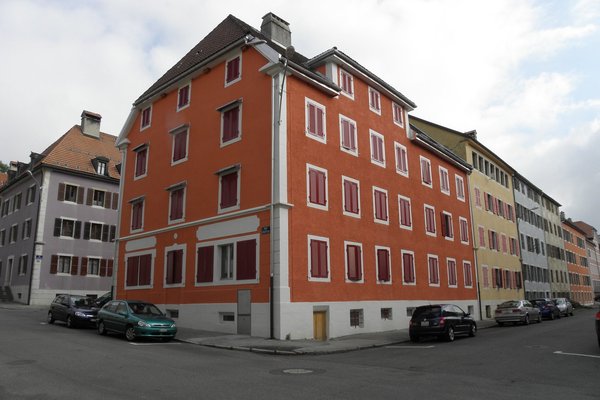Switzerland
La Chaux-de-Fonds / Le Locle
"La Chaux-de-Fonds / Le Locle, watchmaking town planning" refers to the twin towns that are the center of the Swiss watchmaking industry.
Their city layout of parallel strips of houses and workshops was completely set up for the single goal of manufacturing from the end of the 18th century. Safety, health and fairness were the guiding lights. The watchmakers’ houses generally were austere buildings. At the end of the 19th century, the vogue for Art Nouveau added discreet touches of exuberance.
Community Perspective: There’s nothing spectacular to see here. The smaller Le Locle seems to be the best choice of the two.
Site Info
Official Information
- Full Name
- La Chaux-de-Fonds / Le Locle, watchmaking town planning (ID: 1302)
- Country
- Switzerland
- Status
-
Inscribed 2009
Site history
History of La Chaux-de-Fonds / Le Locle
- 2009: Inscribed
- Inscribed
- Type
- Cultural
- Criteria
- iv
Links
- UNESCO
- whc.unesco.org
- Official
-
- urbanisme-horloger.ch — Urbanisme horloger
All Links
UNESCO.org
- whc.unesco.org — whc.unesco.org/
Official Website
- urbanisme-horloger.ch — Urbanisme horloger
Community Information
- Community Category
- Urban landscape: Post-medieval European
Travel Information
Recent Connections
-
Libraries
Bibliothéque de la Ville de la Chaux-de… -
Zürich Hotspot
-
Jura Swiss Alps hotspot
Connections of La Chaux-de-Fonds / Le Locle
- Trivia
-
-
Twin Towns
La Chaux-de-Fonds & Le Locle
-
- Architecture
-
-
Art Nouveau
CdF is a significant town in the history and development of Art Nouveau and the "Style Sapin" ("Pine tree style") originated thereSee www.skiouros.net
-
Art Deco
The Fine Arts Museum Chaux de FondsSee cdf-mba.ne.ch
-
Designed by or influenced Le Corbusier
Villa Turque. Designed 1916 -
Ideal City
The town was almost entirely destroyed by fire in 1794 and had to be rebuilt from scratch. "Rationalist" principles were adopted which addressed the relationship between living conditions and "health". A town plan was developed in 1835 "designed by one of Pestalozzi's pupils (Charles-Henri Junod) and inspired by an ideal town called "Sonnenstadt", planned in 1824 by a Dr Bernhard Christoph Faust. Features included having most houses facing onto small gardens receiving the midday sun.See de.wikipedia.org
-
Modern Urban Planning
The urban planning of both towns has accommodated the transition from the artisanal production of a cottage industry to the more concentrated factory production of the late 19th and 20th centuries
-
- World Heritage Process
-
-
Perfect Inscriptions
2009 -
Inscribed on a single criterion only
iv. to be an outstanding example of a type of building, architectural or technological ensemble or landscape which illustrates (a) significant stage(s) in human history
-
- Religion and Belief
-
-
Jewish religion and culture
Very fine Neo-Byzantine synagogue from 1896. At the time La Chaux-de-Fonds had 850 recorded Jewish inhabitants
-
- Human Activity
-
-
Communism
Chaux de Fonds is mentioned in "Das Kapital" as an exemplary city for the proletariat. Both Chaux de Fonds and Le Locle have strong communist traditions. Le Locle is the only municipality in Switzerland which up until 2016 was governed by the Communist Party .See de.wikipedia.org
-
- Constructions
-
-
Theatres and Opera Houses
"Le Théatre de L'heure bleue" originally built 1837 in the Italianate style -
Railways
Le Locle (station with murals) -
Monumental Fountains
La Chaux-de-Fonds: built in 1888 to mark the arrival of running water in the city via an imposing 20km supply system
-
- WHS on Other Lists
-
-
UNESCO Intangible Cultural Heritage Lists
Craftsmanship of mechanical watchmaking and art mechanics (2020)See ich.unesco.org
-
- Timeline
-
-
Built in the 19th Century
Planned in the early 19th century, after extensive fires, the towns owed their existence to this single industry. (AB ev)
-
- WHS Hotspots
- Science and Technology
-
-
Libraries
Bibliothéque de la Ville de la Chaux-de-Fonds (with murals)
-
News
No news.
Recent Visitors
Visitors of La Chaux-de-Fonds / Le Locle
- 2Flow2
- Adam Hancock
- Adrian Turtschi
- Afshin Iranpour
- Alexander Barabanov
- Alexander Lehmann
- alicemears
- A. Mehmet Haksever
- Argo
- Atila Ege
- AYB
- BaziFettehenne
- Bill Maurmann
- Bin
- Bram de Bruin
- Brendan Carroll
- Can SARICA
- Caspar
- Christian Wagner
- christof
- Christoph
- Christravelblog
- Claire Bradshaw
- Clyde
- Cristina Erba
- ctravel
- CugelVance
- cwthong
- Daniel Chazad
- Daniel Gabi
- David Berlanda
- Deffra
- Dimitar Krastev
- Dimitrios Polychronopoulos
- Dirk-pieter
- Dorejd
- Dwight Zehuan Xiao
- Elia Vettorato
- Els Slots
- Errol Neo
- Evgenii
- Fan Yibo
- Farinelli
- Feldhase
- Femke Roos
- Flexiear
- Frederik Dawson
- Gary Arndt
- GeorgeIng61
- Gernot
- Harald T.
- Harry Mitsidis
- Hasco
- henrik_hannfors
- Hubert
- Iain Jackson
- ih0000
- Ingemar Eriksson
- Ivan Rucek
- ivantham
- Jakob F.
- Jana and Matt
- Janina Lehmann
- Janos
- Jan Zimmermann
- Jarek Pokrzywnicki
- Jasam
- Jawnbeary
- Jay T
- Jean Lecaillon
- Jeffrey Chai
- Jezza
- Joel on the Road
- John Smaranda
- Jonas Kremer
- Joyce van Soest
- jxrocky
- Karito Vies
- Kbecq
- Klaus Freisinger
- Knut
- Lara Adler
- Laurine
- Loic Pedras
- Lucio
- Luis Filipe Gaspar
- Maciej Gil
- Martina Rúčková
- Matthewsharris
- MaxHeAnouBen
- MaYumin
- MH
- Michael Novins
- Mikko
- Milan Jirasek
- Mohboh
- MoPython
- nan
- Nasebaer
- natlefebvre@hotmail.
- Nihal Ege
- Nikolay Marinov
- Patrik
- Peltzi
- PeterH
- Peter Lööv
- Petteri
- Philipp Leu
- Philipp Peterer
- Piotr Wasil
- Ralf Regele
- Randi Thomsen
- Rick Ohm
- Roel Sterken
- Roger Ourset
- Roman Bruehwiler
- Roman Raab
- Schnitzel
- Sergio Arjona
- Shandos Cleaver
- SirLoydd
- Solivagant
- Stanislaw Warwas
- Stefan A. Michelfeit
- Svein Elias
- Szucs Tamas
- Tamara Ratz
- Taotao Chen
- Tarquinio_Superbo
- Thomas Buechler
- Thomas van der Walt
- tony0001
- triath
- Tsunami
- Vanessa Buechler
- Vincent Cheung
- VLabhard
- Walter
- Westwards
- WILLIAM RICH
- Wojciech Fedoruk
- wrung24
- Yevhen Ivanovych
- Zoë Sheng
Community Reviews
Show full reviews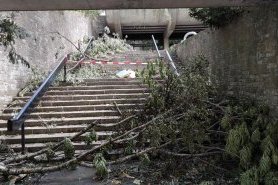
I visited this WHS in July 2023. We were staying in Geneva with a cousin who was working at CERN, and I had heard about La Chaux-de-Fonds being famous as the place of origin for Switzerland's rich watch-making history, so we planned an entire daytrip around going out to the town in the North. I'm sad to say that it is dubious whether all of the effort was worth it.
The main goal of our trip was to see the watch-making museum. According to the Internet it was to be open and operating at the hours we were visiting. However, after multiple hours of travel getting out to this town and navigating on foot from the train station to the museum – we found the museum closed. Apparently, the town had endured a huge windstorm a couple of days before which had knocked down trees and branches all over the city. There was tape covering one stairway that lead to the museum, but nothing offically blocking off the ways of accessing it. Curiously, there were no signs or anything indicating the museum was properly closed, and we couldn't tell for sure whether it was not operating or we were just looking at the wrong location for an entrance. We encountered other confused groups of tourists looking to get into the museum, and after twenty minutes of wandering around or so we finally gave up. No one had written anything online indicating that the museum was temporarily closed.
At …
Keep reading 0 commentsDaniel Chazad
La Chaux-de-Fonds / Le Locle by Daniel C-Hazard
La Chaux-de-Fonds / Le Locle (Inscribed)
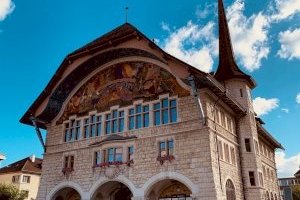
I arrived from France by car via the Col des Roches pass, after having visited Besançon and the Royal Saltworks. Given the limited time I had and due to the Covid-19 crisis, I decided to skip any museums or other indoor exhibitions (apart from a short elevator ride in the Espacité building) and to take advantage of the sunny weather to focus on architecture and urban planning. Thus, all places described as follows had free entry.
I drove to La Chaux-de-Fonds first (in case you don't have a Swiss motorway vignette and plan to just see the two listed towns and return to France afterwards, you may want to avoid the 1,000 meters of motorway between the towns by exiting the A20 in Le Crêt du Locle). Parking is mostly free in both communities but requires a parking disc. I started my tour at Le Crématoire, a fine example of local Art Nouveau. It is not located within the core zone. After having seen the Cure catholique romaine du Sacré-Coeur, I followed the recommendation of several other WHS community members and took the elevator up to the top of the Espacité building for a bird's eye view of this planned city. After a short walk to the Grand Temple, I continued with the Villa Jeanneret-Perret, also known as Maison Blanche, one of Le Corbusier's earlier works but not included in the "Le Corbusier WHS" (he was born in La Chaux-de-Fonds as Charles-Edouard Jeanneret). I liked the fact that one …
Keep reading 0 comments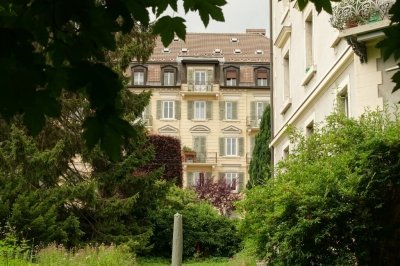
Swiss watch making is legendary and the towns of Le Locle and La Chaux-de-Fonds are the centers of it. It all started at the beginning of the 18th century in Le Locle. When the industry expanded shops were also set up in La Chaux-de-Fonds as more space was available and the road connections were better. At the end of the 18th century the industry really took off when factories were set up. The towns got rich and it shows in the urban planning and buildings.
As my last stop of my weekend trip to Switzerland I visited La Chaux-de-Fonds. The town is fairly large and the sites are spread out. Sign posting could also be a bit better. Specifically, being in Switzerland I was expecting a heritage trail.
There are plenty of villas and bourgeois town houses to see. I also enjoyed the Art Deco decoriations on some buildings and the synagogue. My personal highlight, albeit technically outside of the inscribed area, was visiting the house Le Corbusier built for his mother: Maison Blance. The house is also not part of the Le Corbusier inscription. When you enter you are a bit amazed how traditional it is with flowers decorating the wall. It was one of his early buildings. I would also assume that his mother objected to having his preferred grey color schema applied to her living quarters.
Getting There
There are regular trains connecting both La Chaux-de-Fonds and Le Locle to Yverdon-Les-Bains. From La …
Keep reading 0 comments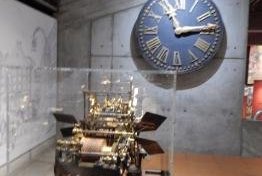
La Chaux-de-Fonds is located in the far west of Switzerland, a bit off the beaten track, but I combined it with Besancon (Vauban citadel) and Arc-et-Senans, as there are around 3 daily trains from Besancon. I spent half a day in La Chaux-de-Fonds (plus around 40 minutes in Le Locle, only 10 minutes away by train, but my visit was cut short by a huge thunderstorm), and I felt that this was enough to get a feel for the city. I joined a tourist train for a ride (especially useful for the residential districts located on a quite steep slope) and so could see the rectangular street layout (also well visible from the Espacité lookout tower) and some of the unique buildings of this town. I also visited the Watchmaking Museum, which was quite interesting, but only focused on watches/clocks in general, not on the city itself. Le Locle is much smaller than La Chaux-de-Fonds, but quite similar in its structure and buildings (it also has its own watchmaking museum). The WH designation is probably justified for the unique city plans and the focus on a very specific type of precision industry, away from the usual ironworks/steel mills/mining sites. The two cities are nice places to visit if you are in the area, but going out of the way for them is only something for WH collectors.
Keep reading 0 comments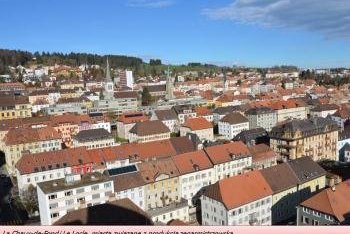
The best way to see and understand the gird of La Chaux de Font is to go to the Tourist Information Centre which is located in one of the tallest building in the city. There you can take the elevator straight to the roof from where you can admire the whole landscape. Is it something unique? I do not know but the rows of four-story houses help you understand the purpose of such constructions in such environment.
As birthplace of Le Corbusier, there are some early works of this architect in the city but at the time of my visit no one was open to the public.
Le Clos is much smaller but seems to be less monotonous.
Keep reading 0 comments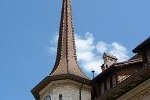
I visited both sites in this WHS in July 2013. I preferred the smaller Le Locle and its buildings in a regular layout. La Chaux-des-Fonds didn't impress me much and most certainly isn't one of the top WHS in Switzerland. The Jura mountains nearby were much more interesting. The Watchmaking Museum is worth a visit but nothing spectacular.
Keep reading 0 comments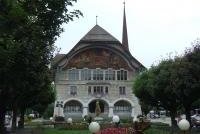
On arriving in La Chaux de Fond I went to the horological information centre at rue Jaquet-Droz 23. Here I sawa short film about La Chaux's role in history of watchmaking. I also received detailed information for a self-guided tour not only of La Chaux but also Le Locle.
So after a couple of hours walking the streets and seeing a variety of relevant buildings I returned to the station and took a train to Le Locle. This town is smaller but seemed to be more interesting and picturesque than its larger neighbour.
I travelled to La Chaux by train from Biel. Trains also travel from Neuchatel and continue to Le Locle. Both routes afford scenic views of lakes and mountains.
Keep reading 0 comments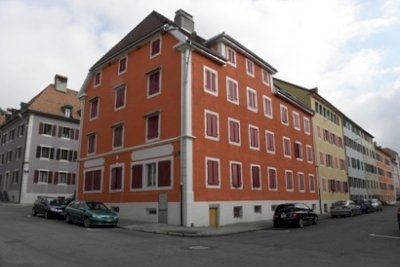
La Chaux-de-Fonds keeps its wealth well-hidden. The area around the railway station is not its best, it never is. It has the usual cheap shops and Chinese restaurants. African immigrants were hanging around, looking utterly lost in the quiet streets. However, “a new town transported from somewhere in anonymous Middle America” – as I had read it described beforehand – does not do it justice.
The first impressive feature you encounter when walking eastwards is a monumental fountain from the late 19th century. This marks the start of the city center. Most views on other historic buildings were blocked this Saturday morning by a local market. So I wandered on to the northeast. I had read parts of the extensive (“exhaustive” according to ICOMOS) nomination dossier and noted down some of the addresses of the most remarkable buildings. Rue Premier Mars numbers 6, 8 and 11 for example are the typical four stories high apartment houses with many windows on the top floors. They provided light for watchmakers’ workshops. A few blocks more to the east there were rows of colourful apartment blocks that housed the factory workers.
The richer part of the town lies more to the north and uphill. Here you'll see the Art Nouveau coming in. Many of its features are hidden though behind closed front doors. This is also the area where Le Corbusier's buildings are located - the Villa Jeanneret-Perret is a steep walk uphill, to a neighbourhood that must be occupied by …
Keep reading 0 comments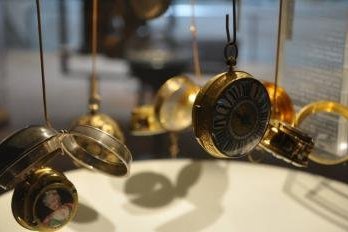
In the beautiful Jura mountain of Neuchatel canton near French border is where La Chaux-de-Fonds located, the third largest French speaking city of Switzerland and one of the most unique world heritage site in terms of inscription reason. There were many world heritage sites under the category of urban planning, La Chaux-de-Fonds’ nomination was dedicated to watch making industry city which in my opinion, a very interesting way to introduce the city as Cité Horlogère.
Admittedly La Chaux-de-Fonds actually was not in my original Switzerland plan, due to severely bad weather in the Jungfrau area, I had to cancel and need to go somewhere else instead, and La Chaux-de-Fonds was the chosen one since it was only 1.30 hour from Zurich by express train. The scenery between Biel and La Chaux-de-Fonds in May maybe one of the most beautiful place I’ve ever seen in this country, the Heidi land with countless hills of beautiful alpine flowers, a great compensation to Jungfrau.
When I reached the city, I directly went to the famous international museum of watch making. The museum was great for watch enthusiasts and its collections easily could keep everyone inside for hours from early industrial clocks to futuristic ones or from heavily gilded watches with jewels to colorful plastic ones, one of the best museums of this region. However apart from the museum, I could not find anything special from the city except a city was well designed in block pattern liked New York’s Manhattan, and few pretty …
Keep reading 0 comments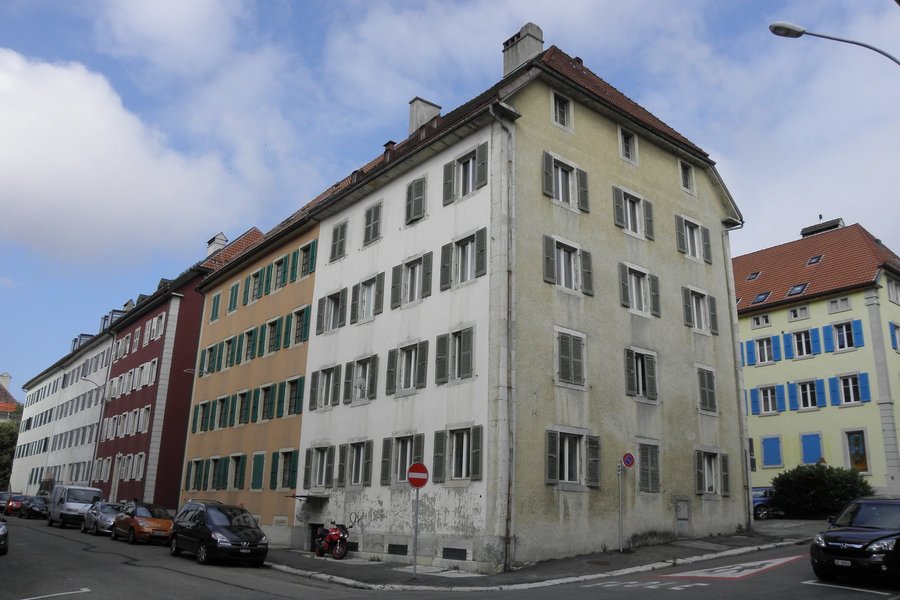
Compared to the beauty of other Swiss cities La Chaux-de-Fonds and Le Locle are rather disappointing. I'm sure this WHS deserves its status, but it's not really a spectacular site for sightseeing. I guess you have to be an expert in architecture to see the interesting aspect of these cities. However, the national watch museum in La Chaux-de-Fonds is well worth a visit. The exibition includes watches from all ages and all over the country. If you plan to visit this site, do it on a short trip from Neuchatel. La Chaux-de-Fonds is easy to reach from there by train.
Keep reading 0 comments
In addition to the well-publicised heritage of La Chaux-de-Fonds, there are MANY other buildings and sites to discover such as “Le Manège” (an old Fourrierist building, now with a new resaurant), several remarkable interiors (of the early nineteenth-century Italianate theatre, of the masonic lodge and of old farmhouses, some of which are now restaurants), the mural paintings in the main library (Bibliothèque de la Ville de la Chaux-de-Fonds) and art museum by Charles Humbert, the murals at the Railway Station and on the Town Hall of Le Locle, the river at Le Doubs with its eighteenth-century restaurant (La Maison Monsieur) and so on. And of course there are the buildings by Charles-Edouard Jeanneret dit Le Corbusier and of his contemporaries at the Crematorium (architect Robert Belli with ornamentation by Charles L'Eplattenier), the old nineteenth-century abattoirs (architect Robert Belli), etc. For those interested in urban gardens and in rural landscapes, there is also a rich heritage. All this is due to the rich, complex and conflictual socio-cultural history of the area with its many famous historical visitors (Bakounin, Lenin, etc.). It is well worth reading about all of this before or while visiting La Chaux-de-Fonds and Le Locle.
Dr. J. K. Birksted, University College London.
Keep reading 0 comments
